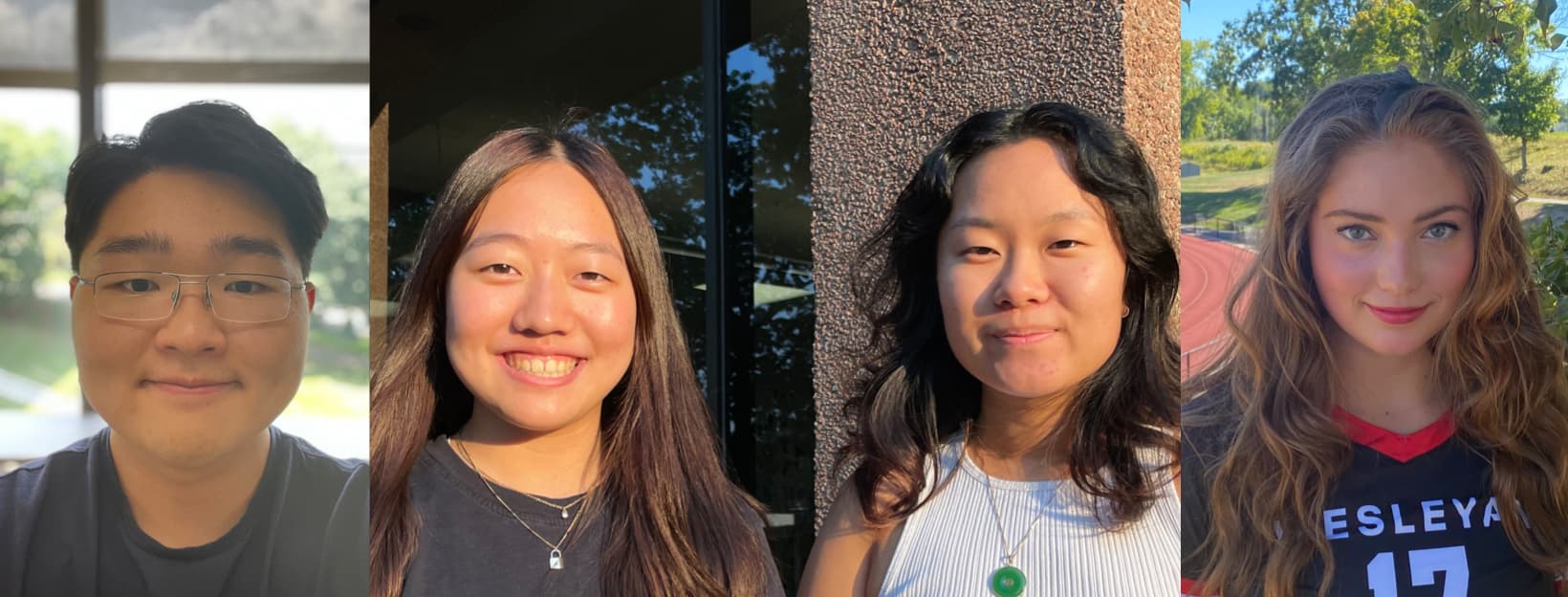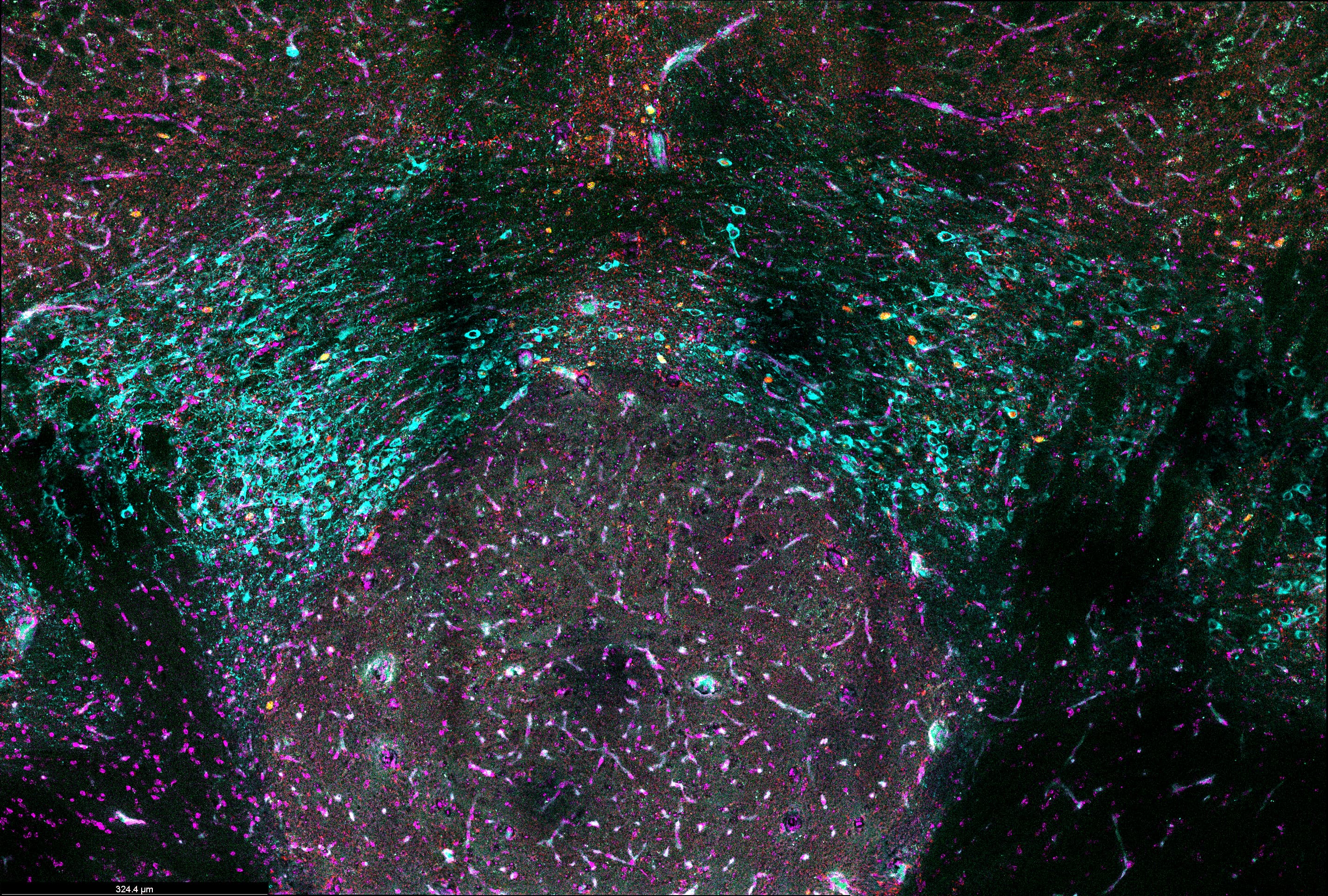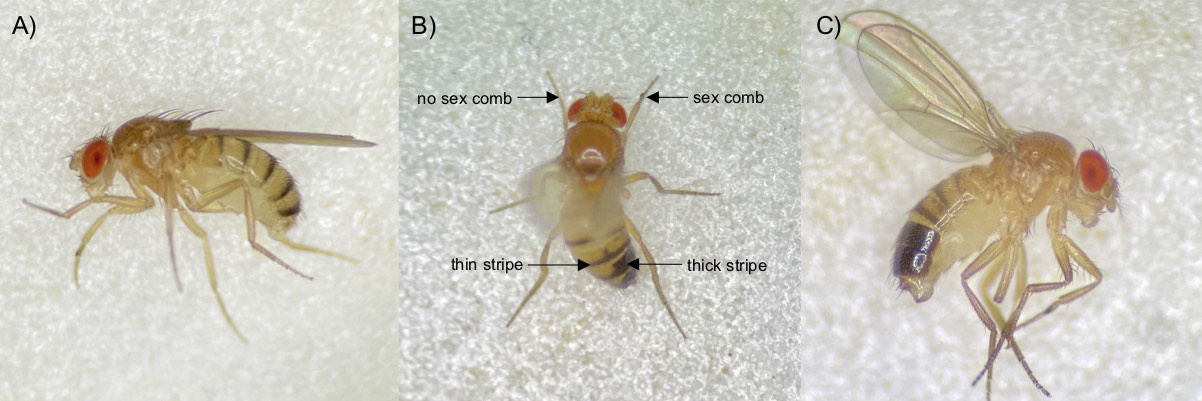
The College of Integrative Sciences (CIS) announced the winners of this year’s Scientific Imaging Contest on Thursday, July 28. First place went to Joshua Woo ’23, second place went to Isabella Ahearn ’23, and third place went to Katherine Fhu ’25 and Vivian Lu ’23. The announcement, which was made in Tischler Hall at the final reception for all students doing summer research, followed the students’ poster presentations in the lobby of Exley Science Center. Each winner was awarded prizes of $150, $100, or $50 respectively, depending on their placement.
Students doing summer research had the opportunity to submit images of their work, accompanied by a short description, to the contest. These submissions were reviewed by a committee of faculty members representing a number of departments. This year’s judges were Associate Professor of Molecular Biology and Biochemistry Amy MacQueen, Associate Professor of Earth and Environmental Sciences Timothy Ku, and Associate Professor of Biology Ruth Johnson. Each entry was judged on metrics of aesthetics and the efficacy of its description in making the image accessible to the audience.
Director of the CIS Seth Redfield expressed why clear visualization is so important in scientific research and thus an integral skill to learn and encourage in students.
“As scientists, we rely very heavily on figures and images,” Redfield said. “We’re using them as part of our research but we also create a ton of content to convey our interpretation of our research. The data visualization challenge is a way to celebrate that and encourage students to share images that mean a lot to them.”

Woo, a neuroscience major and chemistry minor, did summer research focused on fruit flies while working in the Johnson Laboratory.
“We work with the fruit fly eye and we’re focused on how specific cells acquire their shape and their function,” Woo said. “So we work with proteins that associate with the backbone of the cells…we’re trying to discover how proper shape is maintained in developing fruit fly eyes”
Woo’s photo was an image of a normally developed eye, highlighting the uniformity of fruit fly eyes. In order to understand the makeup of the cell, Woo fluorescently labeled the cells using three colors: red to mark the cytoskeleton, green for the protein of interest, and blue for the boundaries between cells.
“My photo is of a drosophila eye,” Woo said. “The eye is interesting because it has a nice pattern of cells and so when something goes wrong, you can clearly see there’s a defect. I didn’t actually do anything to the eye, it’s just a normal eye.”

Ahearn, a neuroscience major starting the BA/MA program in Spring 2023, spent the summer studying the sex differences in alcohol use in mice in the Melón Lab. Her research involves comparing mice brains in early (the equivalent of a hangover) and protracted withdrawal (long-term withdrawal) in regards to alcohol use disorder.
Ahearn emphasized to her how working in the Mélon Lab allowed her to combine her passions and academic interest in Neuroscience.
“She focuses on understanding sex differences in regards to alcohol and drug use disorders, which sounded very interesting to me because I’m very passionate about gender and I’m also very passionate about women’s health,” Ahearn said. “And her lab pays special attention to that, so that really drew me in.”
The photo she submitted highlights her research on a subunit of a type of GABAA receptor responsible for tonic inhibition known as epsilon which has been found in males but never studied in females. Visible in the image is a Ventral Tegmental Area (VTA), or the beginning of the reward pathway, stained to highlight different characteristics.
“We stained protracted withdrawal brains that had already been collected for epsilon and we found epsilon in the female VTAs which hadn’t previously been found, which is very cool and very exciting,” Ahearn said. “What’s more exciting is, although we still have to do an actual count, as of now it looks like females have more epsilon than males…so our brains handle addiction differently, essentially is what that would lead to.”

Fhu, a biology major and chemistry minor, and Lu, a biology major, paired up to do research in The Coolon Lab this summer on evolved toxin resistance in fruit flies.
“Our fly that we have an image of is sort of unrelated,” Lu said.“When I was looking under the microscope I first sorted it as a male. Then when I went back to check my work…half of it had the morphology of a male fly and half had the morphology of a female fly, so I brought it out to Professor Coolon and he told us it was a gynandromorph, meaning an organism that has both male and female sex characteristics, and this type of gynandromorphism is pretty rare in insects…so he suggested we take photos of it and maybe submit it to the contest.”
Each of the contest winners worked closely with faculty advisors throughout the summer who facilitated their research and encouraged them to submit their work to the contest. Redfield applauded students and faculty for the high level of participation in the contest.
“We had over 20 plus entries…so many of these are really amazing images and certainly deserving of an award,” Redfield said.
Hallie Sternberg can be reached at hsternberg@wesleyan.edu or on Twitter @halsternberg.


Leave a Reply